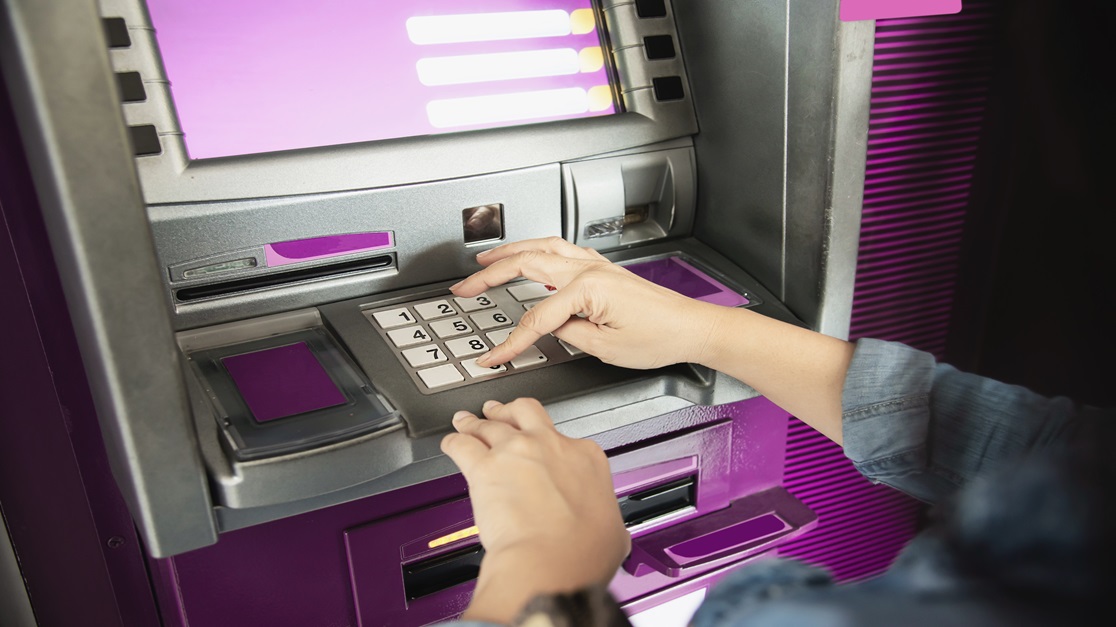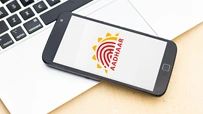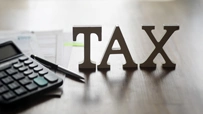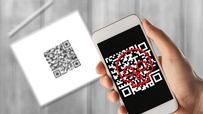ATM Security Features: What Banks Are Doing to Protect You
January 31, 2025

In today's digital age, where cashless transactions are becoming the norm, ATMs play a crucial role in providing convenient access to your hard-earned money. However, with the rise in cybercrime and fraudulent activities, it is essential to understand the security measures that banks have put in place for fraud prevention through ATMs. In this article, we will explore the various ATM security features implemented by banks and how they ensure secure banking for their customers.
ATM Security Features: A Closer Look
ATM security features are critical for protecting users from fraud and ensuring safe transactions. Here’s a closer look at the various security measures implemented by banks to safeguard ATMs:
1. Robust Surveillance Systems
Banks are using state-of-the-art surveillance systems to monitor ATMs and ensure fraud prevention. These systems involve high-resolution cameras that capture both video and images, making it easier for law enforcement agencies to identify suspects in case of any fraudulent activity. Additionally, some banks have installed e-surveillance systems that use artificial intelligence algorithms to detect suspicious behaviour and alert authorities in real-time.
2. Card Skimming Prevention
Card skimming is a prevalent method used by fraudsters to steal card information at ATMs. To combat this, banks have introduced multiple security measures as part of secure banking practices. One such measure is the use of anti-skimming devices that block unauthorised card readers from being installed on ATMs. These devices can detect foreign objects or tampering attempts, alerting authorities instantly.
Additionally, banks have started implementing chip-based EMV technology on debit and credit cards. This technology creates a unique code for each transaction, making it difficult for fraudsters to clone or skim card details.
3. Two-Factor Authentication
As a part of secure banking practices, banks have implemented two-factor authentication for ATM transactions. This involves using multiple authentication methods to verify the user's identity. One common method is the use of PINs (Personal Identification Numbers). By requiring users to enter their PINs along with their debit or credit cards, banks add an extra layer of security to prevent unauthorised access to accounts.
Imagine losing your wallet, including your ATM card. Even though someone finds your card, they won't be able to withdraw money without knowing your unique PIN. This two-factor authentication ensures that only authorised individuals can access your funds.
4. Secure Encrypted Communication
When you insert your card into an ATM, it establishes a secure connection with the bank's servers through encrypted communication channels. This ensures that any data transmitted between the ATM and the bank remains confidential and cannot be intercepted by hackers.
5. Cash Withdrawal Limits
Banks have set daily cash withdrawal limits to minimise the impact of potential fraud. By restricting the amount that can be withdrawn in a single day, banks reduce the risk of significant financial loss in case of unauthorised access to an account. Cash withdrawal limits ensure that even in case of fraudulent activities, the potential loss is limited.
6. Customer Awareness Initiatives
The RBI and banks have engaged in customer awareness initiatives to encourage secure banking practices. Customers are advised to cover their PINs while entering them and to be aware of their surroundings when using ATMs.
They have also been requested to frequently check their account statements for unauthorised transactions and report any suspicious activity immediately. Banks are actively educating customers on how to identify skimming devices and other potential threats at ATMs as part of using secure banking practices.
Final Thoughts
ATM security features implemented by banks play a pivotal role in keeping our money safe and fraud prevention. With advanced surveillance systems, anti-skimming devices, two-factor authentication, secure encrypted communication, and cash withdrawal limits, banks are taking significant steps towards ensuring secure banking for their customers.
To make the most of these security features and protect your finances, it is essential to stay vigilant and follow best practices when using ATMs. Banks like Ujjivan SFB, prioritise financial security.
Disclaimer:
The contents herein are only for informational purposes and generic in nature. The content does not amount to an offer, invitation or solicitation of any kind to buy or sell, and are not intended to create any legal rights or obligations. This information is subject to updation, completion, amendment and verification without notice. The contents herein are also subject to other product-specific terms and conditions, as well as any applicable third-party terms and conditions, for which Ujjivan Small Finance Bank assumes no responsibility or liability.
Nothing contained herein is intended to constitute financial, investment, legal, tax, or any other professional advice or opinion. Please obtain professional advice before making investment or any other decisions. Any investment decisions that may be made by the you shall be at your own sole discretion, independent analysis and evaluation of the risks involved. The use of any information set out in this document is entirely at the user’s own risk. Ujjivan Small Finance Bank Limited makes no representation or warranty, express or implied, as to the accuracy and completeness for any information herein. The Bank disclaims any and all liability for any loss or damage (direct, indirect, consequential, or otherwise) incurred by you due to use of or due to investment, product application decisions made by you on the basis of the contents herein. While the information is prepared in good faith from sources deemed reliable (including public sources), the Bank disclaims any liability with respect to accuracy of information or any error or omission or any loss or damage incurred by anyone in reliance on the contents herein, in any manner whatsoever.
To know more about Ujjivan Small Finance Bank Products Visit:"https://www.ujjivansfb.in"
All intellectual property rights, including copyrights, trademarks, and other proprietary rights, pertaining to the content and materials displayed herein, belong
to Ujjivan Small Finance Bank Limited or its licensors. Unauthorised use or misuse of any intellectual property, or other content displayed herein is strictly prohibited and the same is not intended for distribution to, or use by, any person in any jurisdiction where such distribution or use would (by reason of that person’s nationality, residence or otherwise) be contrary to law or registration or would subject Ujjivan Small Finance Bank Limited or its affiliates to any licensing or registration requirements.
FAQs
1. What should I do if I suspect my card details have been compromised?
If you suspect unauthorised access to your card details, contact your bank immediately to block your card for fraud prevention.
2. Can someone withdraw money from my account without my PIN?
No, two-factor authentication requires both the card and the PIN to access your account. Without the correct PIN, unauthorised individuals cannot withdraw money. This is part of secure banking practices adopted by banks in India.
3. It is necessary to change the ATM PIN often?
It is suggested that you change your ATM PIN at regular intervals, preferably every six months, to enhance security.
4. What are the consequences of sharing my ATM PIN with others?
Sharing your ATM PIN increases the risk of unauthorised access to your account and potential financial loss. Never share your PIN with anyone.
5. Are all ATMs equipped with surveillance cameras?
Yes, banks ensure that all ATMs are equipped with surveillance cameras to monitor and deter criminal activities.
6. What ATM security features do modern ATMs have?
Modern ATM security features include:
- Surveillance Cameras: To deter crime and assist in investigations.
- Vibration, Temperature, and Tilt Sensors: These detect tampering attempts, such as drilling or unauthorised movement.
- Encryption Technology: Most ATMs use triple data encryption standards to secure transaction data.
- Biometric Authentication: Some machines may offer fingerprint verification for added security.
7. What should I do if I suspect my card has been skimmed?
If you suspect that your card has been skimmed, and for fraud prevention, contact your bank immediately to report the incident. They will guide you on the necessary steps to secure your account and prevent any unauthorised transactions.
8. How often do banks inspect their ATMs for skimming devices?
As a part of fraud prevention and to adopt secure banking practices, banks conduct regular inspections of their ATMs to identify and remove skimming devices promptly. These inspections are carried out as part of routine maintenance procedures to ensure the security of ATM transactions.
9. Can using public Wi-Fi networks at an ATM compromise my account security?
It is advisable to avoid using public Wi-Fi networks while performing financial transactions at an ATM as they may not be secure. Opt for cellular data or a trusted private network instead.
10. Are contactless payments at ATMs safe?
Contactless payments at ATMs are generally safe and secure. However, it is essential to ensure that your card is protected against unauthorised use or theft.
Latest Blogs

Dussehra 2025: How to Win Your Financial Battles with Smart Saving
Dussehra 2025 (also known as Vijayadashami) falls on Thursday, October 2, 2025.

eSIM Scam in India: I4C Warns Mobile Users About Rising Fraud – How to Stay Safe
The Indian Cybercrime Coordination Centre (I4C), a wing of the Ministry of Home Affairs, issued a strong warning to mobile users about the rapid increase in eSIM fraud in India.

How to Link PAN with Aadhaar: Step-by-Step Guide & Consequences of Not Linking
Linking your Permanent Account Number (PAN) with your Aadhaar is no longer just a best practice.

Annual Information Statement (AIS): A Complete Guide for Stress-Free ITR Filing
India’s tax season is in its final stretch.

ITR-1 (Sahaj) Restrictions: Income Sources Not Allowed & Filing Rules
With just a few days left before the 15 September 2025 deadline for filing Income Tax Returns (ITRs) for Assessment Year (AY) 2025-26, many taxpayers are rushing to submit their forms online.





